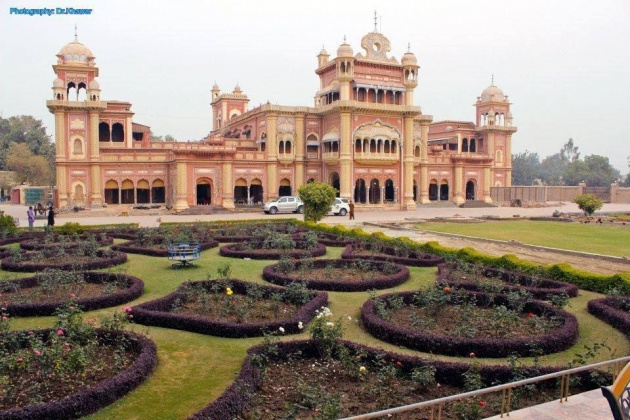
The history of Khyber Pakhtunkhwa stretches back to Greek exploration in the 500s BCE. It is now a province of Pakistan in the mountainous Hindu Kushregion where the South Asian subcontinent meets with Central asia.[1]
During the colonial period, the province was the North-West Frontier Province (1901–1955), forming the northwestern frontier of British India. The government of Pakistan changed its name.[2]
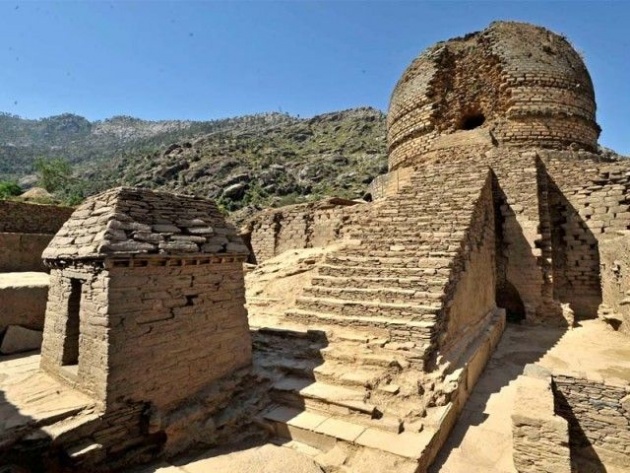
Pre-modern history[edit]
Main article: Gandhara
Iranians dominated the whole Indus valley in the early history of Khyber Pakhtunkhwa. At some point after 516 BCE, Darius Hystaspes sent Scylax, a Greek seaman from Karyanda, to explore the course of the river. Darius Hystaspes subsequently subdued the races dwelling west of the Indus and north of Kabul.[3]
Gandhara, the modern District of Peshawar, was incorporated into a Persiansatrapy, and the Assakenoi, with the tribes farther north on the Indus, formed a special satrapy, that of the Indians. Both satrapies sent troops for Xerxes' invasion of Greece in 480 BCE.
In the spring of 327 BC Alexander the Great crossed the Indian Caucasus (Hindu Kush) and advanced to Nicaea, where Omphis, king of Taxila and other chiefs joined him. Alexander then dispatched part of his force through the valley of the Kabul River, while he himself advanced into Bajaur and Swat with his light troops.[3]
Craterus was ordered to fortify and repopulate Arigaion, probably in Bajaur, which its inhabitants had burnt and deserted. Having defeated the Aspasians, from whom he took 40,000 prisoners and 230,000 oxen, Alexander crossed theGouraios (Panjkora) and entered the territory of the Assakenoi and laid siege to Massaga, which he took by storm. Ora and Bazira (possibly Bazar) soon fell. The people of Bazira fled to the rock Aornos, but Alexander made Embolima(possibly Amb) his base, and attacked the rock from there, which was captured after a desperate resistance. Meanwhile, Peukelaotis (in Hashtnagar, 17 miles (27 km) north-west of Peshawar) had submitted, and Nicanor, a Macedonian, was appointed satrap of the country west of the Indus.[4]
Alexander then crossed that river at Ohind or, according to some writers, lower down near Attock. Nicanor was succeeded as satrap by Philippus, who was, however, assassinated by his Greek mercenaries soon after Alexander left India, andEudamos and Taxiles were then entrusted with the country west of the Indus. After Alexander's death in 323 BC Porusobtained possession of the Lower Indus valley, but was treacherously murdered by Eudamos in 317 BC. Eudamos then left India and with his departure Macedonian power collapsed, and Sandrocottus (Chandragupta), the founder of the Mauryan dynasty, made himself master of the province. His grandson Ashoka made Buddhism the dominant religion in Gandhara and in Pakhli, the modern Hazara, as the rock-inscriptions at Shahbazgarhi and Mansehra show.[4]
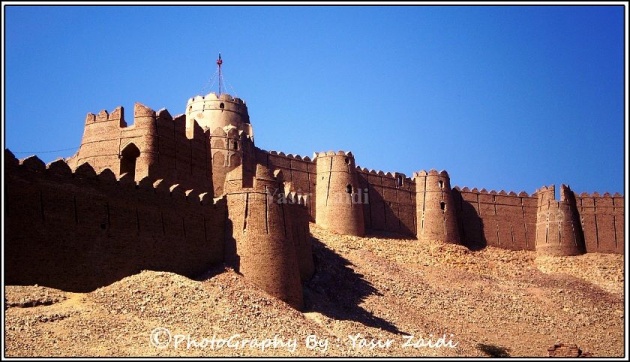
After Ashoka's death the Mauryan empire fell to pieces, just as in the west the Seleucid power was waning. The Greek princes of Bactria seized the opportunity for declaring their independence, and Demetrius conquered part of Northern India (c. 190 BC). His absence led to a revolt by Eucratides, who seized on Bactria proper and finally defeated Demetrius in his eastern possessions. Eucratides was, however, murdered (c. 156 BC), and the country became subject to a number of petty rulers, of whom little is known but the names laboriously gathered from their coins. The Bactrian dynasty was attacked from the west by the Parthians and from the north (about 139 BC) by the Sakas, a Central Asian tribe. Local Greek rulers still exercised a feeble and precarious power along the borderland, but the last vestige of Greek dominion was extinguished by the Yueh-chi.[4]
This race of nomads had driven the Sakas before them from the highlands of Central Asia, and were themselves forced southwards by the nomadic Xiongnu. One section, known as the Kushan, took the lead, and its chief, Kadphises I, seized vast territories extending south to the Kabul valley. His son Kadphises II conquered North-Western India, which he governed through his generals. His immediate successors were the kings Kanishka, Huvishka, and Vasushka or Vasudeva, of [4] whom the first reigned over a territory which extended as far east as Benares and as far south as Malwa, comprising also Bactria and the Kabul valley.[5]
Their dates are still a matter of dispute, but it is beyond question that they reigned early in the Christian era. To this period may be ascribed the fine statues and bas-reliefs found in Gandhara (Peshawar) and Udyana (Buner). Under Huvishka's successor, Vasushka, the dominions of the Kushan kings shrank to the Indus valley and the modern Afghanistan; and their dynasty was supplanted by Ki-to-lo, the chief of a Yueh-chi tribe which had remained in Bactria, but was forced to move to the south of the Hindu Kush by the invasion of the Yuan Yuan. The subjects of Ki-to-lo's successors who ruled in the valley of Peshawar are known to the Chinese annalists as the Little Yueh-chi. Their rule, however, did not endure, for they were subdued by the Ephthalites (Ye-ta-i-li-to or Ye-tha), who established a vast empire from Chinese Turkistan to Persia, including the Kabul valley. Known to the Byzantines as the White Huns, they waged war against the Sassanid dynasty of Persia.[5]
Ancient history[edit]
Since ancient times numerous groups have invaded Khyber Pakhtunkhwa including the Persians, Greeks, Scythians,Kushans, Huns, Arabs, Turks, Mongols, Mughals, and the British. Between 2000 and 1500 BC, the Aryans split off into anIranian branch, represented by the Pushtuns who came to dominate most of the region, an Indo-Aryan branch represented by the Hindkowans who populated much of the region before the time of the Pashtuns and various Dardic peoples who came to populate much of the north. Earlier pre-Aryan inhabitants included the Shin or shinwaris and Burusho.
The region is mentioned in the Mahabharatha epic as the Gandhara Kingdom, which lay on the outer fringes ofBharatvarsha.
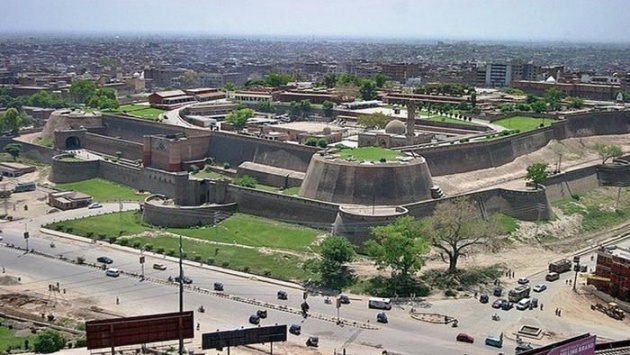
The Vale of Peshawar was home to the Kingdom of Gandhara probably from around the 6th century BC. Known for its Hinduand Buddhist heritage, it was part of the Nanda, Mauryan and Shunga empires before being overrun by foreigners. AncientPeshawar, then known as Purushupura, became a capital of the Kushan Empire. The region was visited by such notable historical figures as Darius II, Xuanzang, Faxian, Marco Polo, and Mountstuart Elphinstone, among others.
Following the Mauryan conquest of the region, Buddhism became a major faith, at least in urban centres, as attested by recent archaeological and hermeneutic evidence. Kanishka, a prominent Kushan ruler was one of the prominent Buddhist kings.
“
The region of Gandhara has long been known as a major centre of Buddhist art and culture around the beginning of the Christian era. But until recently, the Buddhist literature of this region was almost entirely lost. Now, within the last decade, a large corpus of Gandharan manuscripts dating from as early as the 1st century A.D. has come to light and is being studied and published by scholars at the University of Washington. These scrolls, written on birch-bark in the Gandharan language and the Kharosthi script, are the oldest surviving Buddhist literature, which has hitherto been known to us only from later and modern Buddhist canons. They also institute a missing link between original South Asian Buddhism and the Buddhism of East Asia, which was exported primarily from Gandhara along the Silk Roads through Central Asia and thence to China.[6]
”
Rural areas retained numerous Shamanistic faiths as evident with the Kalash and other groups. The roots of Pashtunwali or the traditional code of honor followed by the Pashtuns is also believed to have Pre-Islamic origins. Persian invasions left small pockets of Zoroastrians and, later a ruling Hindu elite established itself during the Shahi period.
Shahi era[edit]
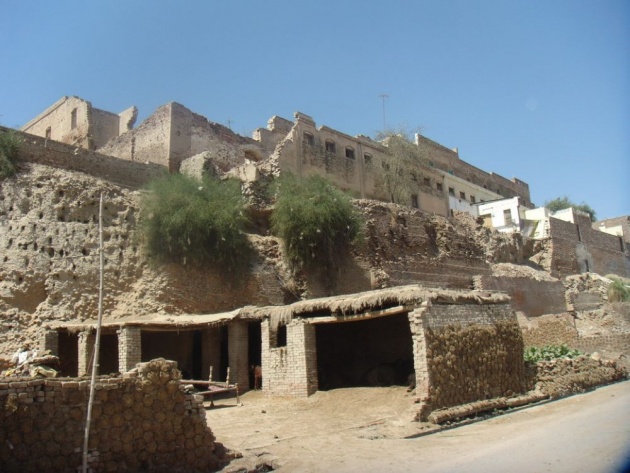
During the early 1st millennium, prior to the arrival of Muslims, the Khyber Pakhtunkhwa region was ruled by the Shahi kings. The early Shahis were Buddhist rulers and reigned over the area until 870 CE when they were overthrown and later replaced.
When the Chinese monk Xuanzang visited the region early in the 7th century, the Kabul valley region was still ruled by affiliates of the Shahi kings, who is identified as the Shahi Khingal, and whose name has been found in an inscription found in Gardez.
While the early Shahis were Buddhists and Kabulistani in origin and referred to as Kushano-Hepthalites,[citation needed] the later Shahi kings of Kabul and Gandhara were Hindu and had links to some ruling families in neighbouring Kashmir and the Punjab. The Hindu Shahis are believed to have been a ruling elite of a predominantly Buddhist, Hindu and Shamanistic population and were thus patrons of numerous faiths. Various artefacts and coins from their rule have been found that show evidence of their multicultural domain.
Mahmud of Ghazni wiped out the last Shahi rulers in the early 11th century.
Arrival of Islam[edit]
Hinduism, Zoroastrianism, Buddhism and Shamanism were the prominent religions in the region until Muslim Arabs andTurks conquered the area before the 2nd millennium CE[citation needed]. Over the centuries some migrations took place by the local population, which mainly consisted of Hindus and Buddhists, while those remaining converted to Islam. Local Pashtun and Dardic tribes converted to Islam, while retaining some local traditions (albeit altered by Islam) such as Pashtunwali or the Pashtun code of honor.
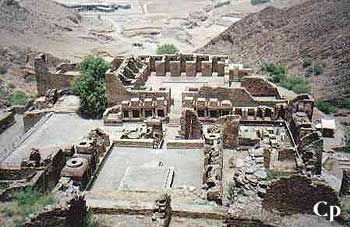
Ghaznavid Empire[edit]
Main article: Ghaznavid Empire
Khyber Pakhtunkhwa was part of larger Islamic empires from 963 to 1187, including the Ghaznavid Empire (975-1187) headed by Sultan Mahmud of Ghazni and the empire of Muhammad Shahabuddin Ghauri, who reigned from 1202–1206. The Ghaznavid domain included what is now Afghanistan up to Punjab and parts of South Asia with Lahore as its capital from 1151 to 1186.
The Pashtun Muslims of the Delhi Sultanate later gained control of the region. The "Delhi Sultanate" refers to the manyMuslim states that ruled in India from 1206 to 1526. Several Turkic and Pashtun dynasties ruled from Delhi instead of from Lahore: the Mamluk dynasty (1206–90), the Khilji dynasty (1290–1320), the Tughlaq dynasty (1320–1413), the Sayyid dynasty (1414–51), and the Lodi dynasty (1451–1526).
Modern history[edit]
See also: Military history of the North-West Frontier
The Hephalites Toramana and Mihirakula ruled Northern India from Sagala, which may have been Sialkot in the Punjab. Mihirakula penetrated far into India, but about 528 was defeated by a confederacy of Indian princes under Yasodharman, and was driven back to the Punjab and Indus Valley. There were two distinct streams of Muslim invasion towards India. The earlier resulted in the conquest of Khorasan but although Kabul had been assailed as early as 655 and made tributary in 683, it regained its independence before 700, and the stream of invasion was deflected towards Multan and Sindh. Ghazni was only taken in 870; and in 902 Kashmir forces deposed Ohind, the rebellious ruler of Udabhandapura and gave his kingdom to Toramana, son of Lalliya, with the title of Komaluka-the Kamalu of Muslim historians.[5]
In 974 Pirin, the slave-governor of Ghazni, repulsed a force sent from India to seize that stronghold, then in 977 Sabuktagin, his successor, became virtually independent and founded the dynasty of the Ghaznavids. In 986 he raided the Indian frontier, and in 988 defeated Jaipal with his allies at Laghman. Soon afterwards he took control of the country as far as the Indus, placing a governor of his own at Peshawar. Mahmud of Ghazni, Sabuktagin's son, having secured the throne of Ghazni, again defeated Jayapala in his first raid into India (1001), Battle of Peshawar, and in a second expedition defeated Anandpal (1006), both near Peshawar. He also (1024 and 1025) raided the Pashtuns, a name that now appears for the first time as that of a people living in the hills between Ghazni and the Sulaiman range. The present territories of the North-West Frontier Province, excluding Hazara, thus formed part of the Ghaznivid empire.[5]
In 1179, Muhammad of Ghor took Peshawar, capturing Lahore from Khusru Malik two years later. After Muhammad's assassination in 1206, his able general Taj-ud-din Yalduz established himself at Ghazni with his real stronghold in the Kurram valley until he was driven into India by the Khwarizmis in 1215. The latter were in turn overwhelmed by the Mongolsin 1221, when Jalal-ud-din Khwarizmi, defeated on the Indus by Genghis Khan, retreated into the Sind-Sagar Doab, leaving Peshawar and other provinces to be ravaged by the Mongols. However, in 1224 Jalal-ud-din appointed Saif-ud-din Hasan, the Karlugh, as ruler of Ghazni. To this territory Saif-ud-din added Karman (Kurram) and Banian (Bannu), which gained its independence in 1236.[7]
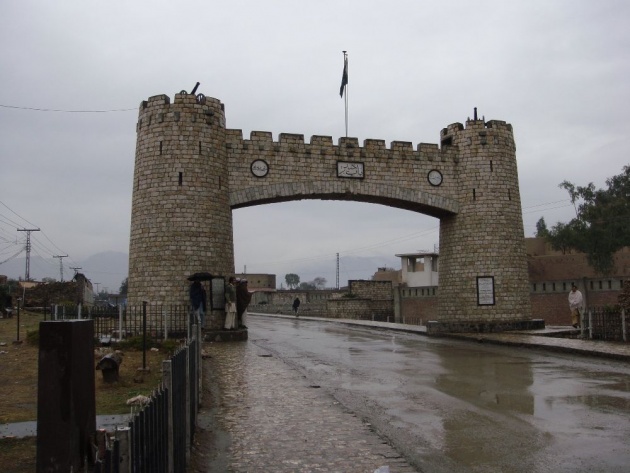
In that same year, Altamsh set out on an expedition against Banian but he was compelled by illness to return to Delhi. After his death, Saif-ud-din attacked Multan only to be repulsed by the feudatory of Uch. Three years later, in 1239 the Mongols drove him out of Ghazni and Kurram but he held onto Banian. In his third attempt to take Multan in 1249 he was killed. His son Nasir-ud-din Muhammad became a feudatory of the Mongols, retaining Banian. Eleven years later, in 1260 Nasir-ud-din Muhammad arranged an alliance through his daughter and a son of Ghiyas-ud-din Balban, reconciling the Mongol sovereign with the court of Delhi. By this time the Karlughs had established themselves in the hills.[7]
In 1398, Timur set out from Samarkand to invade India. After subduing Kator, now Chitral, he made devastating inroads into the Punjab, returning via Bannu in March 1399. His expedition established a Mongol overlordship in the province, and he is said to have confirmed his Karlugh regent in the possession of Hazara. The descendants of Timur held the province as a dependency of Kandahar, and Shaikh Ali Beg, governor of Kabul under Shah Rukh, made his power felt even in the Punjab. But with the decay of the Timurid dynasty their hold on the province relaxed.[7]
Meanwhile, the Pashtuns rose in power. Implacably hostile to the Mongols, they now appeared as a political factor. At the close of the fourteenth century they were firmly established in their present seats south of Kohat, and in 1451 Bahlol Lodi's accession to the throne of Delhi gave them a dominant position in Northern India. Somewhat later Babar's uncle, Mirza Ulugh Beg of Kabul, expelled the Khashi (Khakhai) from his kingdom, and compelled them to move eastwards into Peshawar, Swat, and Bajaur. After Babar had seized Kabul he made his first raid into India in 1505, marching down the Khyber, through Kohat, Bannu, Isa Khel, and the Derajat, returning by the Sakhi Sarwar pass. About 1518 he invaded Bajaur and Swat, but was recalled by an attack on Badakhshan.[7]
Mughal era[edit]
The Tomb of Khan Kaju (Mandanr), Second Head of the Confederation of the Khashi Pashtun Tribes in the 16th Century C.E. - by Prof. Dr. Taskeen Ahmad Khan.
In 1519, Babar's aid was invoked by the Gigianis against the Umr Khel Dilazaks (both Pashtun tribes), and his victory at Panipat in 1526 gave him control of the province. On his death in 1530 Mirza Kamran became a feudatory of Kabul. By his aid the Ghwaria Khel overthrew the Dilazaks who were loyal to Humayun, and thus obtained control over Peshawar; but about 1550 Khan Kaju (Mandanr), at the head of a great confederation of Khashi Pashtun tribes, defeated the Ghwaria Khel at Shaikh Tapur. Humayun, however, had now overthrown Kamran, and in 1552 he entered Peshawar, which he garrisoned strongly, so that Khan Kaju (Mandanr) laid siege to it in vain. Nevertheless, the Mughal hold on these territories was weak and often precarious.[8]
On Humayun's death in 1556 Kabul became the apanage of Mirza Muhammad Hakim, Akbar's brother; and in 1564 he was driven back on Peshawar by the ruler of Badakhshan, and had to be reinstated by imperial troops. Driven out of Kabul again two years later, he showed his ingratitude by invading the Punjab; but eventually Akbar forgave him, visited Kabul, and restored his authority. When Mirza Hakim died (1585), Akbar's Rajput general, Kunwar Man Singh, occupied Peshawar and Kabul, where the imperial rule was re-established, Man Singh becoming governor of the province of Kabul. In 1586, however, the Mohmands and others revolted under Jalala, the Roshania heretic, and invested Peshawar.[8]
Man Singh, turning to attack them, found the Khyber closed and was repulsed, but subsequently joined Akbar's forces. Meanwhile, the Yusufzai and Mandaur Pashtuns had also fallen under the spell of the Roshania heresy; and about 1587 Zain Khan, Kokaltash, was dispatched into Swat and Bajaur to suppress them. The expedition resulted in the disastrous defeat of the Mughals, Birbal, Akbar's favourite, being killed. In 1592 the Pashtuns invested Peshawar, but Zain Khan relieved the fortress, and in 1593 overran Tirah, Swat, and Bajaur. The Roshanias, however, were still far from subdued. Tirah was their great stronghold, and about 1620 a large Mughal force met with a severe defeat in attempting to enter that country by the Sampagha pass.[8]
Six years later Ihdad, the Roshania leader, was killed ; but Jahangir's death in 1627 was the signal for a general Pashtun revolt, and the Roshanias laid siege to Peshawar in 1630, but distrusting their Afghan(Pashtun) allies retreated to Tirah. Mughal authority was thus restored, and Tirah was invaded and pacified by the imperial troops in an arduous campaign. Shah Jahan, however, attempted to govern the Pashtuns despotically and caused great discontent. Nevertheless, Raja Jagat Singh held Kohat and Kurram, and thus kept open the communications with Kabul. In 1660 Tirah had to be pacified again; and in 1667 the Yusufzai and Mandaur Pashtuns were strong enough to cross the Indus, and were only defeated near Attock.[8]
In 1672 Muhammad Amin Khan, Subahdar of Kabul, attempted to force the Khyber, and lost his whole army, 40,000 men, with baggage and materiel. Other disasters followed. At Gandab in 1673 the Afridis defeated a second Mughal army, and in 1674 they defeated a third force at Khapash and drove it into Bajaur. These reverses brought Aurangzeb in person to Hasan Abdal, whence he dispatched a force to Kohat, while a second army forced the Khyber.[9]
Aurangzeb appears to have adopted a conciliatory policy towards the Pashtuns, some of whom now received fiefs from the emperor. This policy and their internal dissensions kept the country in a state of anarchy, but prevented any concerted Afghan(Pashtun) rising against the Mughals. Nevertheless, the Pashtuns overran the Pakhli district of Hazara early in the eighteenth century and the Mughal power rapidly declined, until in 1738 Nadir Shah defeated Nazir Shah, the Mughal governor of Kabul, but allowed him as feudatory to retain that province, which included Peshawar and Ghazni.[9]
Of Nadir Shah's successors, Ahmad Shah Durrani indeed established something more nearly approaching a settled government in the Peshawar valley than had been known for years, but with the advent of Timur Shah anarchy returned once more. On the death of Timur Shah his throne was contested with varying fortunes by his sons, whose dissensions gave ample opportunity to the local chieftains throughout the province of establishing complete independence. Peshawar ultimately fell to the Barakzai family; Dera Ismail Khan to the Sadozais.[9]
Maratha era[edit]
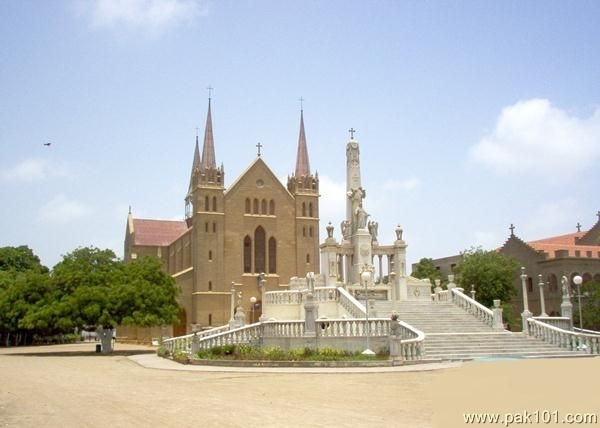
Main article: Maratha conquest of North-west India
In April–May 1758, the Marathas under Raghunathrao captured Punjab, Kashmir and Khyber Pakhtunkhwa defeating Durrani forces. Peshawar was captured by Marathas on 8 May 1758 when Pashtuns under Timur Shah Durrani were defeated in the Battle of Peshawar. However the Maratha rule in Khyber Pakhtunkhwa was short-lived as Durrani re-captured the province in 1759.
Sikh era[edit]
Sikh invasions began in 1818 and from then until the British annexation the Sikhs under Ranjit Singh steadily made themselves masters of the country. In 1818 Dera Ismail Khan surrendered to a Sikh army. Five years later the Sikhs harried the Marwat plain of Bannu. In 1836 all authority was taken from the Nawabs of Dera Ismail Khan and a Sikh Kardar appointed in their place. But it was not until after the first Sikh War that the fort of Bannu was built and the Bannuchis brought under the direct control of the Lahore Darbar by Herbert Edwardes.[9]
Under the Pashtuns, Hazara-i-Karlugh, Gandhgarh and the Gakhar territory were governed from Attock; while Kashmircollected the revenue from the upper regions of Pakhli, Damtaur and Darband. In 1813, the Sikhs conquered the fort of Attock, at which time lower Hazara became tributary to them. Upper Hazara shared the same fate in 1819, when the Sikhs conquered Kashmir. The territory referred to as Hazara was united when it was bestowed as a jagir to Hari Singh Nalwa, Commander-in-Chief of the Sikh army, by Maharaja Ranjit Singh in 1822.[10]
The Sikhs forayed into Peshawar for the first time in 1818, but did not occupy the territory. In 1823, following the Battle of Naushehra on the banks of the Kabul river, Hari Singh Nalwa and his men chased the Pashtuns first to Peshawar and then to the mouth of the Khyber Pass[citation needed]. The Sikhs entered the city of Peshawar for a second time, once again affirming to hold Peshawar as a tributary to the Sikh Court of Lahore. After plundering the city they burnt its fortress, theBala Hissar.[11] The Sikh occupation of Peshawar in 1834 was executed in a most unusual manner.[12] By 1836, with the conquest of Jamrud the frontier of the Sikh Kingdom bordered the foothills of the Hindu Kush Mountains and the Khyber Pass formed its western boundary.[13]
The death of Hari Singh in battle with the Pashtuns near Jamrud in 1837 brought home to Ranjit Singh, now nearing the close of his career, the difficulty of administering his frontier acquisitions. On his death the Sikh policy was changed. Turbulent and exposed tracts, like Hashtnagar and Miranzai, were made over in jagir to the local chieftains, who enjoyed an almost complete independence, and a vigorous administration was attempted only in the more easily controlled areas.[9] Of the Sikh governors, the best remembered for his bravery is Hari Singh Nalwa (1834-1837) and that for his cruelty and barbaric executions is Ranjit Singh's Italian General Avitabile (1838-1842).
The most significant contributions of Sikh rule to this region were the city of Haripur, the first planned city in this entire region, and the forts of Sumergarh (Bala Hissar, Peshawar) and Fatehgarh (Fort of Jamrud at the mouth of the Khyber Pass).[14]
British era[edit]
Following the treaties of Lahore and Amritsar, the British annexed the frontier territory after the proclamation of 29 March 1849. For a short time the Districts of Peshawar, Kohat, and Hazara came under the direct control of the Board of Administration at Lahore, but about 1850 they were formed into a regular Division under a Commissioner. Dera Ismail Khan and Bannu, under one Deputy-Commissioner, formed part of the Leiah Division till 1861, when two Deputy-Commissioners were appointed and both Districts were included in the Derajat Division, an arrangement maintained until the formation of the North-West Frontier Province.[15]
The internal administration differed in no way from the rest of the Punjab. But to maintain the peace of the border the Board directly ordered the raising of a special force—the Punjab Frontier Force. It consisted at first of 5 regiments of cavalry, the corps of Guides, 5 regiments of infantry, 3 light field-batteries, two garrison batteries, two companies of sappers and miners, and the Sind camel corps. Various changes occurred in the composition of the force, which at length, in 1886, was removed from the control of the Punjab Government and amalgamated with the regular army.[15]
The attitude of the people during the Indian Rebellion of 1857 is the highest tribute that can be paid to the success of the internal administration.[according to whom?] In the history of the frontier the interest of that period of stress centred at Peshawar. The Hindustani regiments at Dera Ismail Khan and Kohat were disarmed without difficulty, and troops and levies were hurried away to strengthen the garrison of Peshawar or join the British forces cis-Indus. The situation in Peshawar was very different. The District contained a large Hindustani force, which proved mutinous to the core. It was thought possible that the Amir of Kabul might pour an army through the Khyber.[15]
For one reason or another almost every powerful tribe beyond the border was under a blockade. When the news of the outbreak reached Peshawar, a council of war was at once held and measures adopted to meet the situation. The same night the Guides started on their march to Delhi. On May 21 the 55th Native Infantry rose at Mardan. The majority made good their escape across the Indus, only to perish after fearful privations at the hands of the hill-men of the Hazara border. On May 22, warned by this example, the authorities of Peshawar disarmed the 24th, 27th, and 51st Native Infantry, with the result that Pathans not only of Peshawar, but also from across the border, came flocking in to join the newly raised levies. The next few months were not without incident, though the crisis was past. When the mutiny was finally suppressed, it was clear that the frontier districts had proved to the British government a source of strength rather than of danger.[15]
During the early 20th century the so-called Red Shirts led by Khan Abdul Ghaffar Khan agitated through non-violence for the rights of Pashtun areas.[citation needed]
Indian independence[edit]
The 15 August 1947 marked the end of the British Raj. In July 1947, the Parliament of the United Kingdom passed the Indian Independence Act 1947 declaring that by 15 August 1947 it would divide British India into the two new independentdominions of India and Pakistan. The act also declared that the fate of the North West Frontier Province would be subject to the result of referendum. This was in accord with the June 3rd Plan proposal to have a referendum to decide the future of the Northwest Frontier Province—to be voted on by the same electoral college as for the Provincial Legistative Assembly in 1946.[16]
The referendum was held on 2 July 1947 while polling began on 6 July 1947 and the referendum results were made public on 20 July 1947. According to the official results, there were 572,798 registered voters out of which 289,244 (99.02%) votes were cast in favor of Pakistan while only 2874 (0.98%) were cast in favor of India.. According to an estimate total turnout for referendum was only 15% less as compared to that of 1946 elections.[17]
Main points regarding the referendum were:
(1) The electorate (eligible voters) was about 16% of the total population equal to that of in 1946 i.e. out of the population of 3.5 million, only 572,799 people were Registered voters. Some have argued that a segment of the population was barred from voting but as compared to the 1946 elections, exercised votes were only 15% less in number.[18][19][20]
(2) There was no option in the polls to vote to become an sovereign state independent of both India and Pakistan. Because of this, the plebiscite was boycotted by Abdul Ghaffar Khan and his Khudai Khidmatgars along with other nationalistic and pro-India Pakhtuns.
(3) In the referendum 50% (292,118) of the eligible voters voted which was only 15% less than what was in 1946 elections.[21][22]
(4) There was less than one month between the setting of the referendum and the date of the vote.
(5) As compared to 1946 elections where one person could vote twice, people in 1947 referendum were allowed to vote only once.
For some individuals rigging and low voter turnout was a concern in referendum but the voters that casted vote were only 15% less(i.e.292,118 voters) than that of 1946 elections (i.e.375,989 voters). Also some argue that the princely states of NWFP and tribal areas were barred from participating in the referendum but the number of eligible voters was same as that of 46 elections .[17][20][23]
Post-independence[edit]
Afghanistan's loya jirga of 1949 declared the Durand Line invalid, which led to border tensions with Pakistan. Afghanistan's governments have periodically refused to recognize Pakistan's inheritance of British treaties regarding the region.[24]
During the 1950s, Afghanistan supported the Pushtunistan Movement, a secessionist movement that failed to gain substantial support amongst the tribes of the North-West Frontier Province. Afghanistan's refusal to recognize the Durrand Line, and its subsequent support for the Pashtunistan Movement has been cited as the main cause of tensions between the two countries that have existed since Pakistan's independence.[citation needed]
After Ayub Khan eliminated Pakistan's provinces, Yahya Khan, in 1969, abolished this "one unit" scheme and added Amb,Swat, Dir, Chitral and Kohistan to the new North-West Frontier Province as the Provincially Administered Tribal Areas.[citation needed]
Afghan jihad and war with the USSR[edit]
This section does not cite any sources. Please help improve this section byadding citations to reliable sources. Unsourced material may be challenged andremoved. (January 2011)
During the Soviet occupation of Afghanistan (1979–1989) the North-West Frontier Province served as a major base for supplying the Mujahideen who fought the Soviets during the 1980s.
Following the arrival of Soviet forces, over five million Afghan refugees poured into Pakistan, most residing in the North-West Frontier Province (as of 2007, nearly 3 million remained).
The North-West Frontier Province remained heavily influenced by events in Afghanistan. Civil war in Afghanistan (1989–1992) led to the rise of the Taliban, which had emerged in the border region between Afghanistan, Baluchistan, PATA and FATA as a formidable political force. Following the terrorist attacks of September 11, 2001, the FATA and bordering North-West Frontier Province became a front-line region again, as part of the global "War on Terror".
In 2010 the name of the province changed to "Khyber Pakhtunkhwa". Protests arose among the local ethnic Hazara population due to this name change, as they began to demand their own province. Seven people were killed and 100 injured in protests on 11 April 2011.[25]
Geography[edit]
The province was created during the colonial rule of the British empire and was a province of British India. As a province of British India it had an area of 38,665 square miles (100,140 km2), of which only 13,193 was under direct control of the British, the remainder occupied by the tribes under the political control of the Agent to the Governor-General.[26]
I



